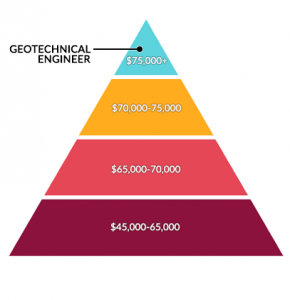What Does Geotheta Mean?
What Does Geotheta Mean?
Blog Article
Some Known Questions About Geotheta.
Table of ContentsThe smart Trick of Geotheta That Nobody is Talking AboutThe Greatest Guide To GeothetaFacts About Geotheta Revealed6 Easy Facts About Geotheta Explained
They team up with civil designers, structural engineers, engineers, and various other specialists to integrate geotechnical factors to consider right into the total job design and building procedure. This requires efficient teamwork, control, and interaction to make sure that the geotechnical aspects align with the project objectives and fulfill regulatory needs.Mining & Materials Engineering: Concepts of drilling, infiltration rates, and factors impacting the selection of boring approach. Blowing up techniques in surface area and underground workings. Mechanical and constant approaches to fragmentation, consisting of longwall shearing and fullface boring.
Integrated analysis of fragmentation and comminution operations. Offered by: Mining & Materials Design.
The smart Trick of Geotheta That Nobody is Discussing
Bachelor's degree programs in civil, geotechnical, geological, and environmental design usually last four years and include basic education and learning training courses in English, social science, and the liberal arts, as well as training courses in innovative mathematics, architectural geology, and fluid mineralogy. (https://www.tumblr.com/geotheta/757702666915840000/geotheta-has-grown-exponentially-since?source=share)
Geotechnical engineering includes the evaluation of the soil and rock problems at a certain website, and their effects for the advancement of that site. As many frameworks rely upon the ground for assistance, it lacks surprise that an in-depth understanding of the ground conditions, and the viability of foundation systems, are crucial to the long-lasting stability and performance of the structure or framework.
Specialising in the examination of geological developments and ground practices, geotechnical engineers perform scientific examinations and testing to understand the influence these geological formations might carry the style and construction of structure, civil and framework projects. This know-how is important for the design and construction of buildings, roads, passages, dams, bridges, and water and sewer system.
The geotechnical team at Douglas Allies consistently talk to architects, design designers, developers, and building contractors to make referrals on design and development proposals to make sure that the constructed structures are accordingly made for the ground problems. For instance, the design of footing systems requires to consider the weight of the framework, the ability of the ground to sustain that weight together with motion resistances and reliable building.
What Does Geotheta Do?
This task is considerably streamlined by the use our Douglas Map geospatial system that makes this information conveniently obtainable in a very easy to use web browser user interface. A geotechnical engineer will direct the exploration of boreholes and test pits to gather dirt and other examples, and likewise assess surface area attributes and ground direct exposures to create a geotechnical version of the subsurface problems.
Depending upon the task kind and ground problems came across, lab testing may amongst various other points assess stamina, compressibility, sensitivity and/or permeability of soil and rock examples. Hereafter information is gathered and collated, the results are used for a geotechnical design of the site, which is normally offered as sections across the website.

A geotechnical examination by nature can just assess the ground conditions at the places pierced or excavated. Natural variations in dirt and rock problems can take place across a website and in between examination areas. It is for that reason great technique that the geotechnical engineer be kept throughout building and construction of the job to supply on-site confirmation that the ground problems experienced follow the assumptions and guidance given in the geotechnical investigation record.
Rumored Buzz on Geotheta
Geotechnical engineers use their extensive understanding of dirt and rock to assess threat and fix troubles on diverse framework projectsGeotechnical design is a specialist branch of civil design which looks at the practices of earth materials and the application of dirt and rock auto mechanics. Tailings Engineer. As a geotechnical designer, you will examine the physical, mechanical and chemical residential or commercial properties of soil and rock in order to design structures, maintaining structures and earthworks
Geotechnical engineering is very closely linked to and overlaps with, both engineering geology and ground design - https://www.mixcloud.com/geotheta/. It's feasible to specialise in geotechnics or benefit a geotechnical company yet be called an engineering rock hound or a ground designer. As a geotechnical designer, you'll require to: develop and preserve relationships with clients and other experts associated with the site, throughout each projectmaintain safety criteria on website bear in mind cost implications when you make recommendationsstudy geological maps and aerial pictures from a series of sources and from different time periodsexamine building and construction plans to see just how practical they are based on your understanding of the siteinvestigate threats or geological dangers for the sitesearch for environmentally delicate functions, such as landfill begin to develop factual and interpretive ground modelsplan area investigationsdrill and evaluate samples of bedrock, dirt, groundwater and additional products monitor other professionals on sitesolve technological issues as they emerge, such as unanticipated structures at drill sitesmonitor problems during and after building to make sure frameworks are steady in the short and lengthy termadding information collected on site to your first researchcreating geotechnical computations, illustrations, and two or three-dimensional visit the website computer versions analyzing the datamaking recommendations concerning the proposed use the site

Report this page